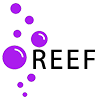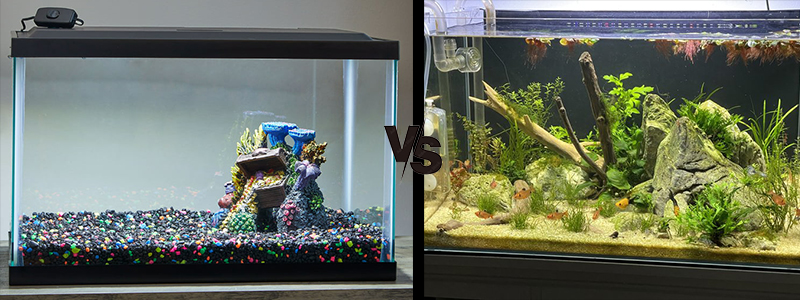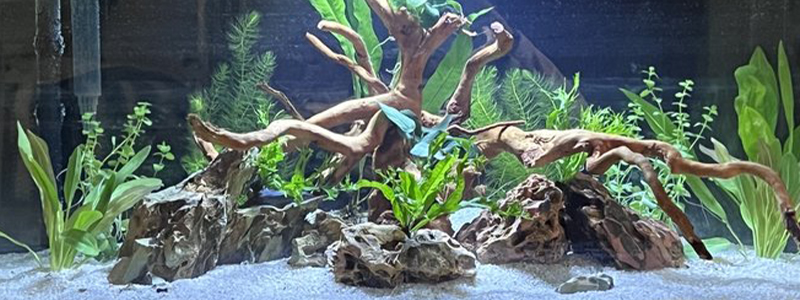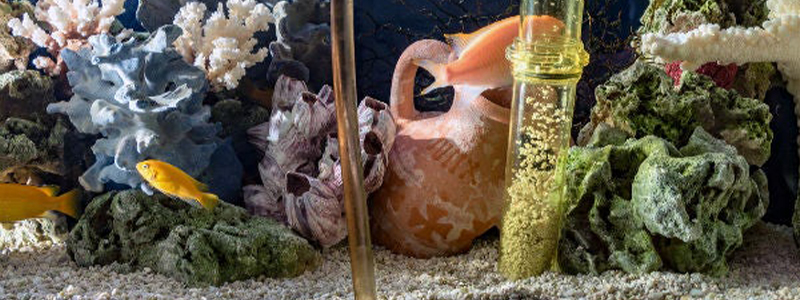The Nyos Reefer Calcium test kit is relatively new to the U.S. aquarium scene.
I had been using Salifert’s calcium test kit. But, since Nyos positions its kits as being ‘high precision’ test kits, I decided to give it try.
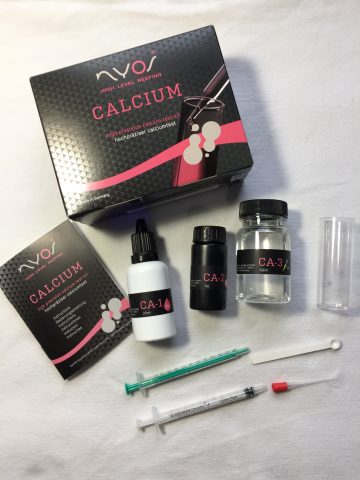
The very first thing I noticed when I opened the Nyos kit is that the syringes looked to be of higher quality than those in the Salifert kit. So did the bottles the testing reagents were in.
Disclosure: This article contains affiliate links. When you follow a link to purchase the products, I sometimes earn a commission, at no additional cost to you. Read my full disclosure here.
At first, this kind of impressed me. But it actually turned out to be a bit of a problem.
The test is simple enough…
- Use the green syringe to add 4 ml of aquarium water to the test vial.
- Add 10 drops of the first reagent (CA-1) to the vial, then swirl the vial for 5 seconds.
- Use the included measuring spoon to add one level scoop of the second reagent (CA-2) to the vial. (The water turns red.)
- Place the dropper tip on the black syringe, and draw 1 ml of the third reagent (CA-3) into the syringe.
- Then, drop-by-drop add it while swirling the vial. Continue adding it drop-by-drop until the solution turns blue.
- Read the syringe to see how much was used. Each mark (0.01ml) equals 5ppm of calcium.
So, if the syringe still has 0.14ml left in it, then 0.86ml was used. 0.84×5=4.30 or 430ppm of calcium in your water.
But this is where the problem of the high-quality syringe gave me trouble…
The syringe in my test kit has a very good seal on its plunger. So good that it takes quite a bit of finger pressure to dispense the fluid. And this makes it incredibly difficult to dispense just one drop at a time.
The slightest bit of additional push to overcome the tight plunger results in several drops squirting out at once.
If it happens when the solution is close to turning blue, you can very easily end up having several extra drops squirt out leaving you with an inaccurate reading.
That brings us the second issue I’ve encountered with this calcium test kit – it almost always reads about 50ppm too high.
At first, I wasn’t sure if my Nyos kit was reading high, or my Salifert kit was reading low.
Fortunately, I use a 3-part salt mix that I can very precisely measure out. And the manufacturer labels what the exact salinity, alkalinity, and calcium values will be for those values.
Using a scale and measuring cup I precisely measured out my salt mix components and water to make one gallon of fresh saltwater with a known calcium value.
When I tested this ‘control’ of fresh saltwater it read 50ppm higher than the manufacturer’s listed value.
When I tested the ‘control’ of fresh salwater with the Salifert kit it read dead-on with the manufacturer’s listed value.
And when I tested my aquarium earlier several times with each kit, the Nyos kit consistently gave me readings the were about 50ppm higher than the Salifert readings.
Conclusion:
My Nyos kit tends to read about 50ppm high. My Salifert kit tends to be spot on.
Granted this may just be my particular kit. Maybe one of the reagents is old or bad. And since it is consistently high by 50ppm, I could reliably use it and just subtract 50ppm each time I test to get the actual tank reading.
But the sticky syringe just frustrates me too much to want to deal with it.
I may LOVE the Nyos Reefer nitrate test kit far more than any other I’ve tried.
But when it comes to calcium, I’ll stick with the Salifert Ca test kit.
